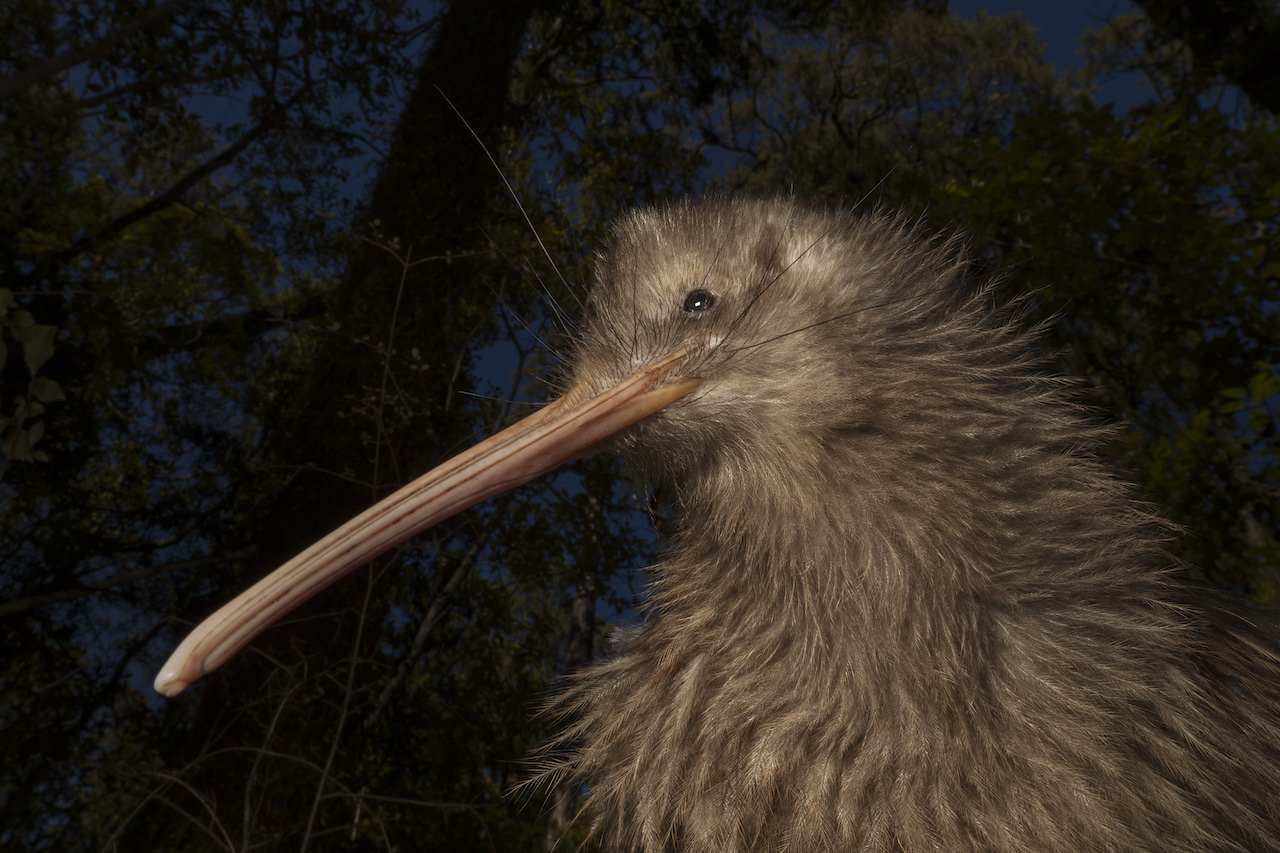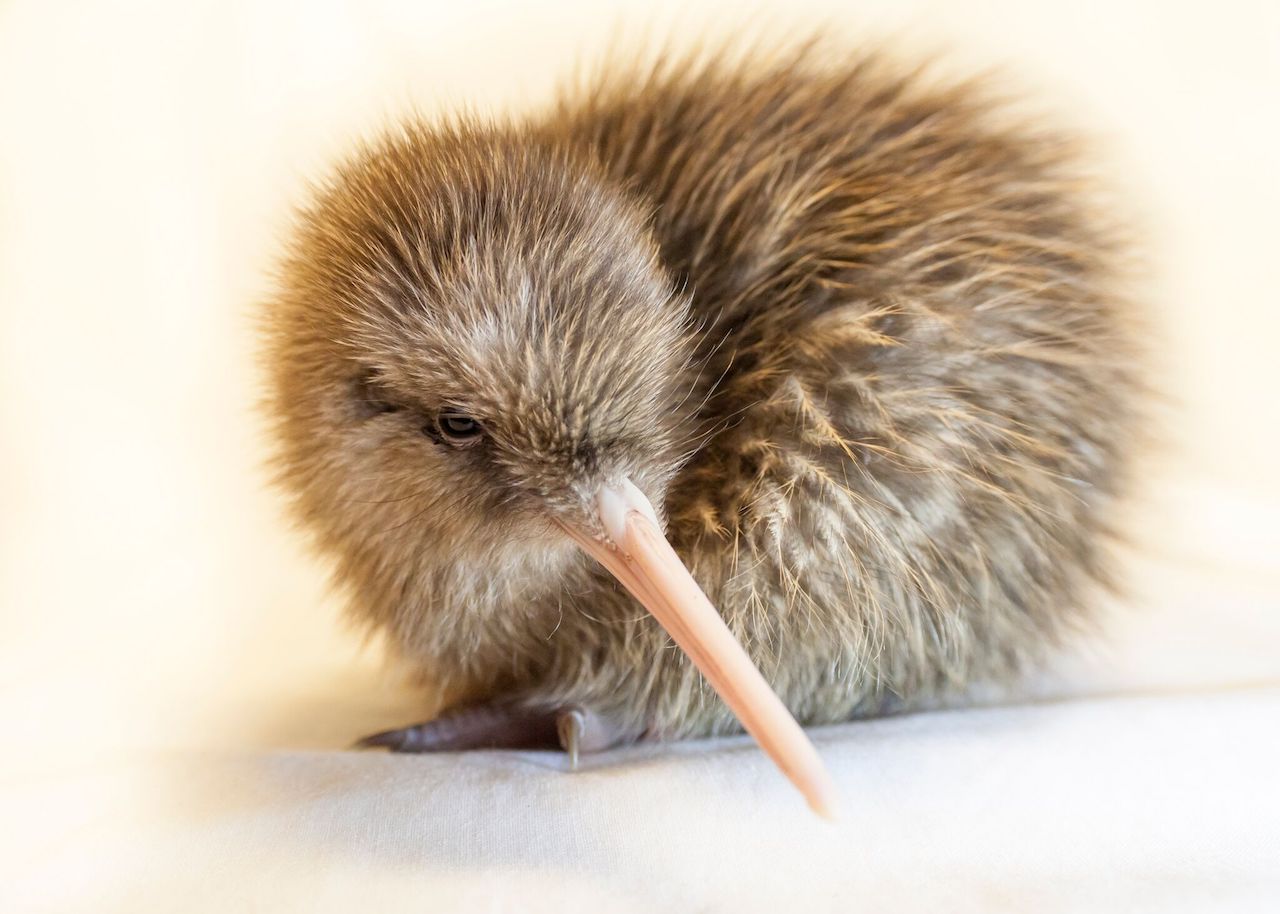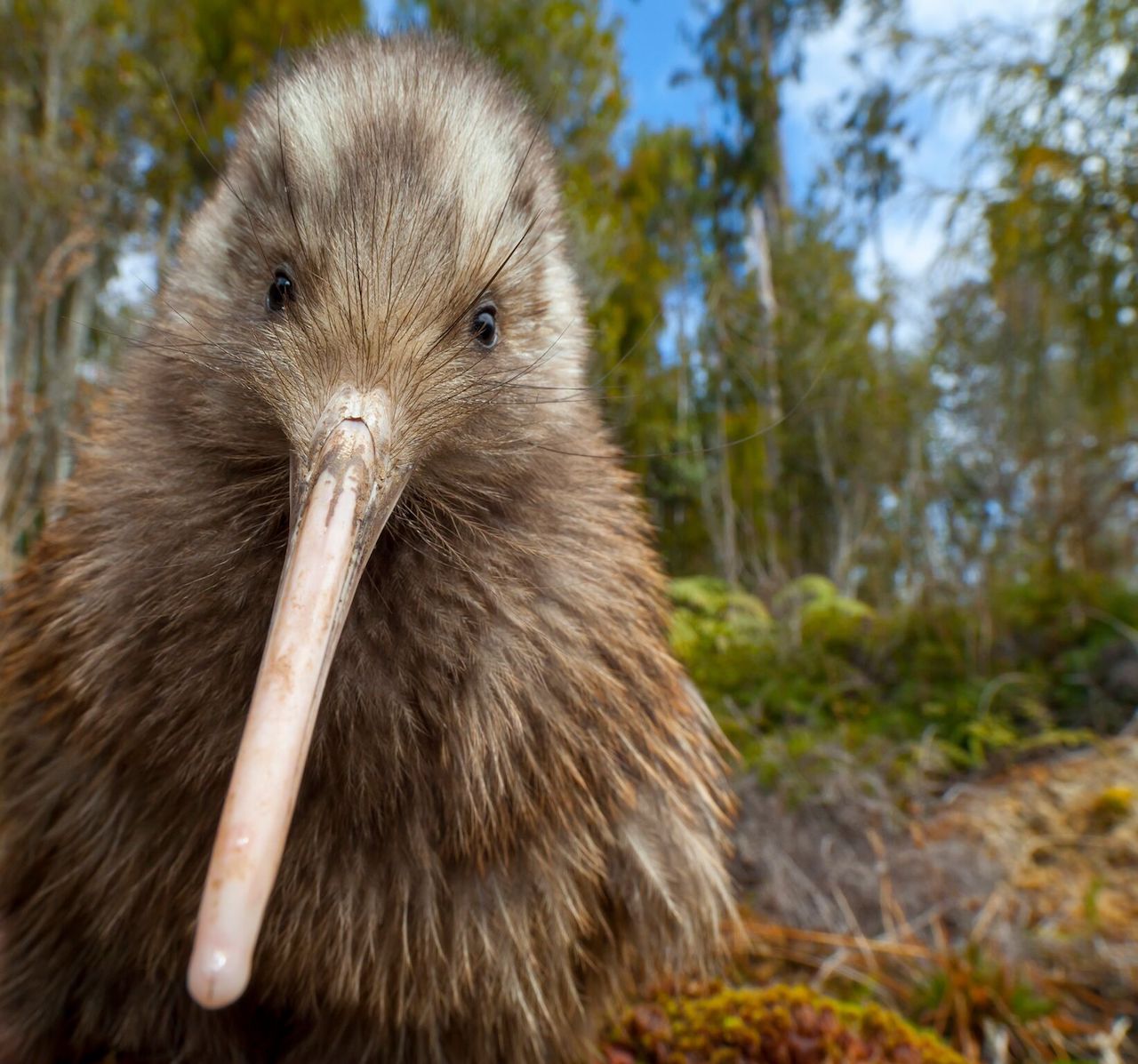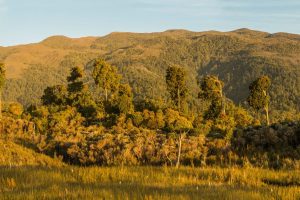Why the Rowi (Ōkarito Brown Kiwi) Deserves your Vote in Bird of the Year
Sixteen-year-old Michael Burton-Smith is campaigning for the Rowi (Ōkarito Brown Kiwi) to take out Forest & Bird’s prestigious Bird of the Year competition for 2018. Here, he tells us about the first time he met a Rowi and why they deserve your vote!
I first fell in love with the Rowi last year when I went on a birding tour of the South Island with some mates. We pulled into Ōkarito late in the evening, tired from a busy day birding in Haast Pass. Determined, we went out into the bush in the hope of finding the rarest kiwi in the world. As we walked along the path in the dark of the night, our torches showed a large greyish-brown football on legs running down the track. I was delighted, and I will never forget what happened next.
We flicked off our torches and sat down on the damp path. In the pitch black, we heard something thunder its way up the path. We flicked our torches on, and there she was. About a metre away from us stood a massive female Rowi, staring us right in the eye. Her mate ran about in the background, and more birds called in the distance.

Photo by the Department of Conservation
That was enough. I was hooked!
Before human settlement, Rowi roamed lowland New Zealand as far north as Hawke’s Bay and right across the northern South Island. Today, nearly all of the 450 birds left live in one small forest near Ōkarito on the West Coast. The rest of the population live on a few tiny islands where they have been introduced to secure their survival.
What’s more, the Rowi is almost completely dependent on us. Whilst the adult birds are armed and dangerous with huge feet and bags of attitude, the young cannot defend themselves against stoats.
Because baby Rowi leave the nest and go it alone almost immediately, they were vulnerable to what is known as ‘recruitment failure’. The population was literally unable to breed in order to replace the older populations.

Photo by the Department of Conservation
One factor stood in the way of Rowi and extinction: their longevity. These birds can live to a whopping 80 years old, and it was this long lifespan which kept just enough birds alive for them to be saved.
That started what is known as ‘Operation Nest Egg’, an incredible project in which eggs are taken from the wild and into care until they are old enough to fend for themselves. This includes a creche program, where the young birds are released on islands in the Cook Strait to mature before being sent home to Ōkarito. Once the egg is taken, the parent birds lay another and then another, tripling the breeding rate. This has helped Rowi numbers rise from 180 in 1995 to the current population of 450.
Even though a Rowi call (which is frequently likened to a screaming woman running through the bush) can be heard from over a kilometre away, we still aren’t hearing their voices. Unless more people start caring, then we won’t be able to continue the incredible work undertaken to save these birds. Even though they are well on the rise, their dependence on humans means they are still vulnerable to extinction.
Rowi are one of a kind. With their incredible backstory alone they are amazing, but there is far more to these birds than their history. Baby Rowi in care at the West Coast Wildlife Centre are known for being relaxed, but when they get out in the wild they know just what to do. This inbuilt instinct is derived from the fact that chicks walk out of the nest after just a few days!

Photo by the Department of Conservation
Rowi females are much larger than the males, and although they have the less musical voices, they certainly wear the pants in the relationship!
They’re aggressive and put on a good wriggle when being held. Even when it comes to incubating the egg, she makes the male do the day shift while taking turns with him at night.
The easiest way to tell Rowi apart from New Zealand’s other four species of kiwi is to look at their feathers. Rowi have grey-coloured feathers rather than the reddish browns of the two Brown Kiwi species, but they are not nearly as grey as the two Spotted Kiwi. Rowi are also unique for the white patches around the head, giving each Rowi it’s own ‘face’ — no other kiwi species has this!
When I was asked what famous New Zealander the Rowi reminded me off, the answer was easy – Jacinda Ardern all the way! With their strong, independent women, hard-working attitudes and personality which can capture a nation, the Rowi captures the essence of the Prime Minister in all her glory. Maybe they could learn a thing or two from the PM about how to look after their kids a bit better too. But hey, nobody’s perfect!
So that is why I love the Rowi. From the moment I met one, I’ve known they were one of a kind. Their unbelievable history, crazy personality and unique family dynamics sets the Rowi apart not just from other kiwi, but from all other birds in the world.

